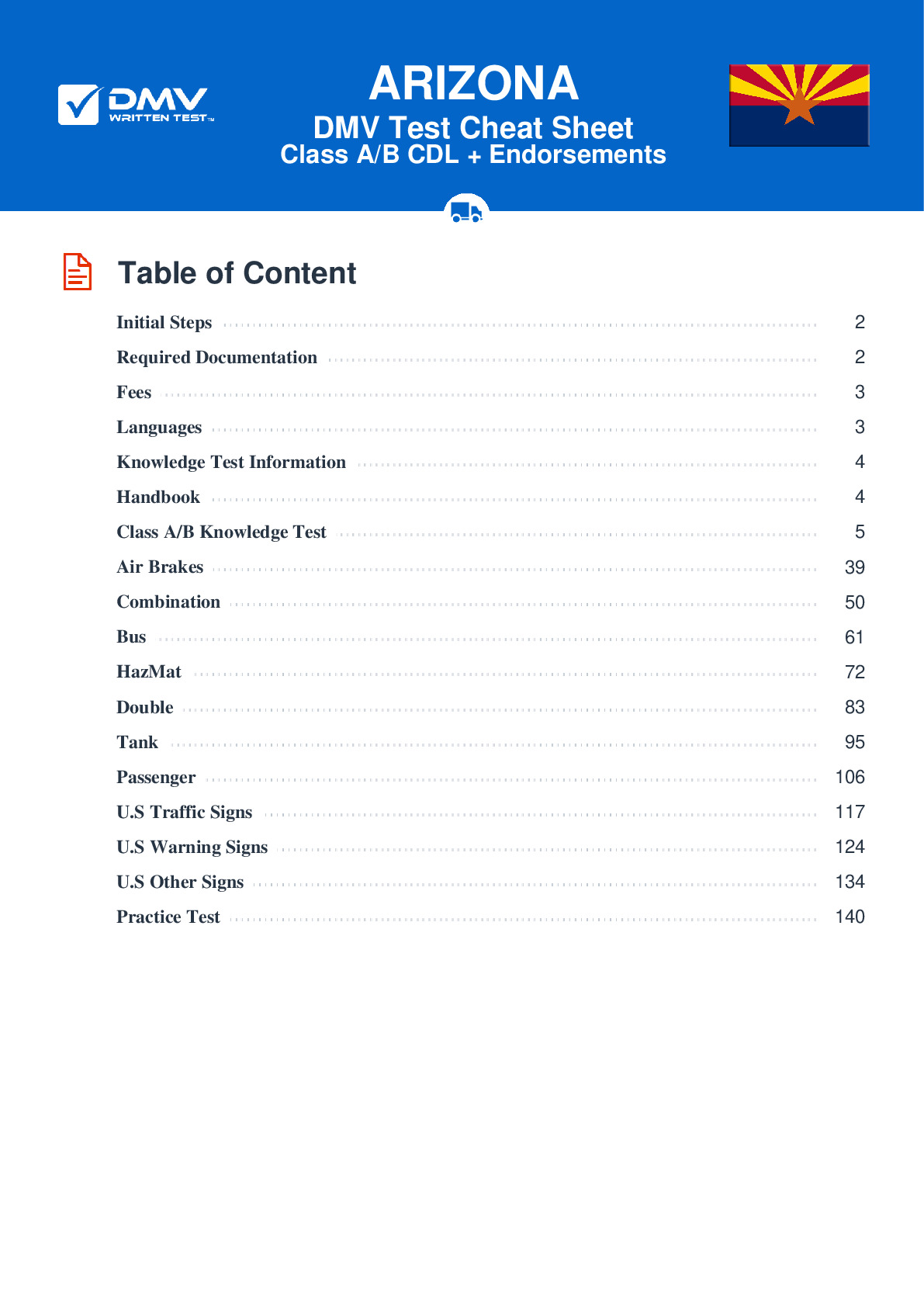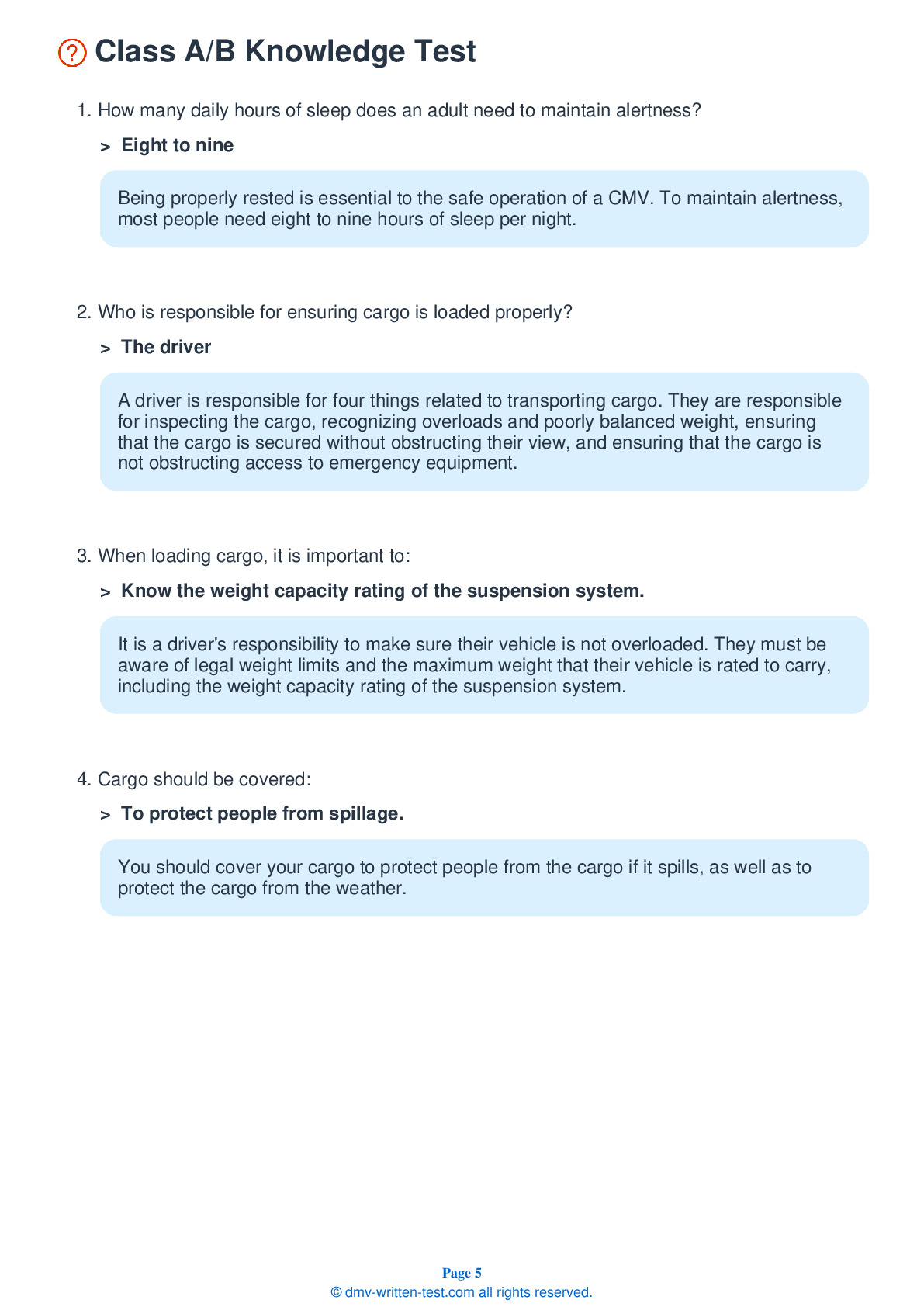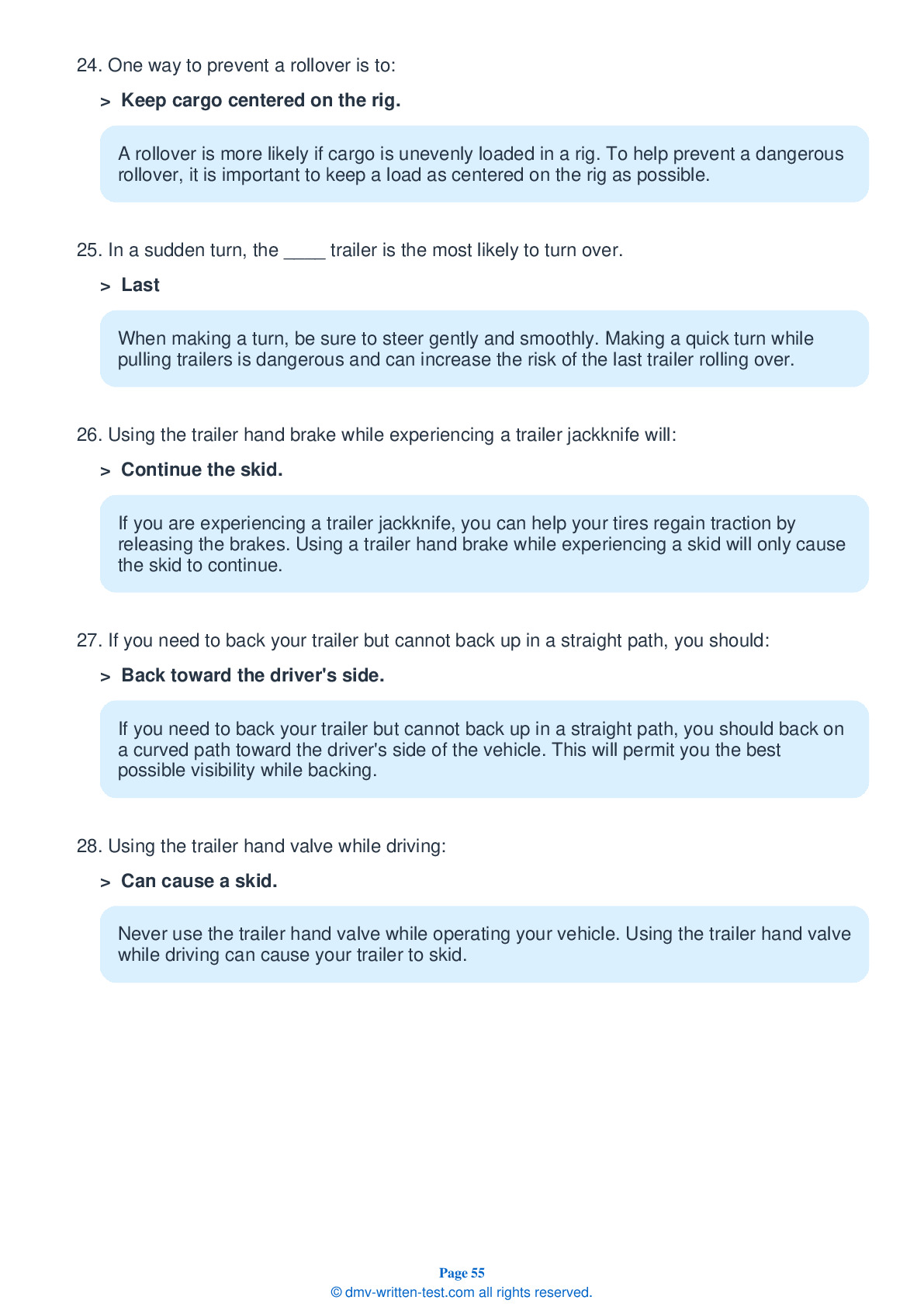Air Brakes
This endorsement is required for driving a vehicle with air brakes. To receive this endorsement, applicants must pass a written test. The test consists of 25 multiple choice questions. Each question has three answer choices. To pass, the applicant must answer at least 20 questions correctly. Test questions come from the Arizona Commercial Driver License Manual. Questions come from the chapter covering: Air Brakes. The Air Brakes endorsement may be used with the Class A, B or C CDL.
Number of Question
Passing Score
1. Failing to drain air tanks could result in:
Explanation
In an air brake system, the air tanks must be periodically drained to remove accumulations of water and compressor oil. If water is not removed, it could freeze in cold weather and cause brake failure.
2. When leaving your vehicle unattended:
Explanation
Always apply the parking brake when leaving your vehicle unattended.
3. Some water and compressor oil is usually found in the compressed air within an air brake system. The water and compressor oil:
Explanation
If water and compressor oil are left to build up in an air brake system, the system can be damaged. Air storage tanks are equipped with drains to allow this accumulation to be removed. Manually controlled drains should be operated at the end of each day of driving.
4. If the low air pressure warning signal comes on in a vehicle with air brakes, the driver should:
Explanation
If the low air pressure warning signal comes on while you are operating a vehicle with air brakes, you should stop and safely park the vehicle as soon as possible. It is essential that you are able to stop safely while you still have some braking power remaining.
5. An emergency brake must be controlled by:
Explanation
All trucks, truck tractors, and buses must be equipped with emergency brakes and parking brakes. Because air pressure can eventually leak away, emergency and parking brakes should be held on by mechanical force.
6. The air compressor is connected to the:
Explanation




